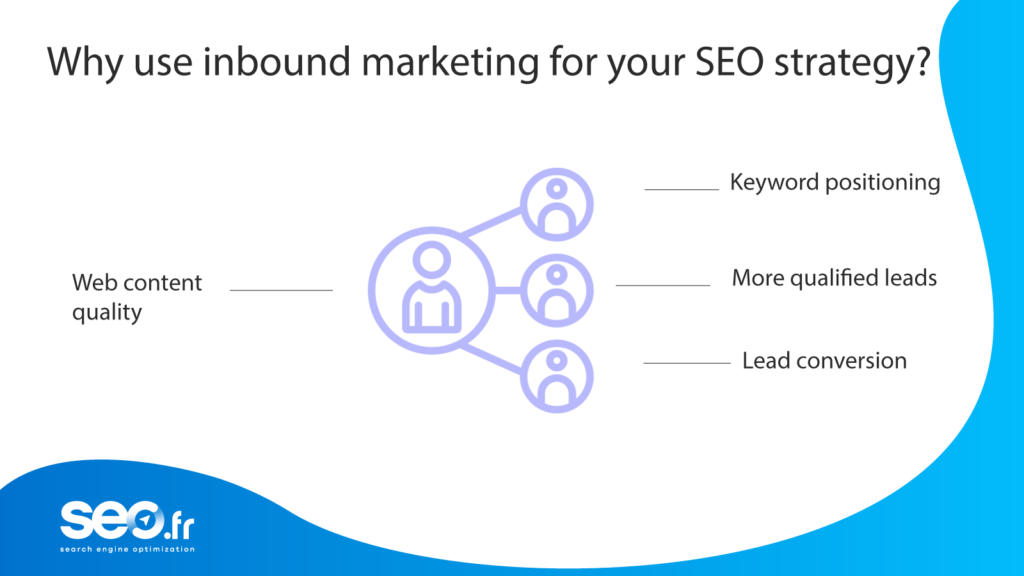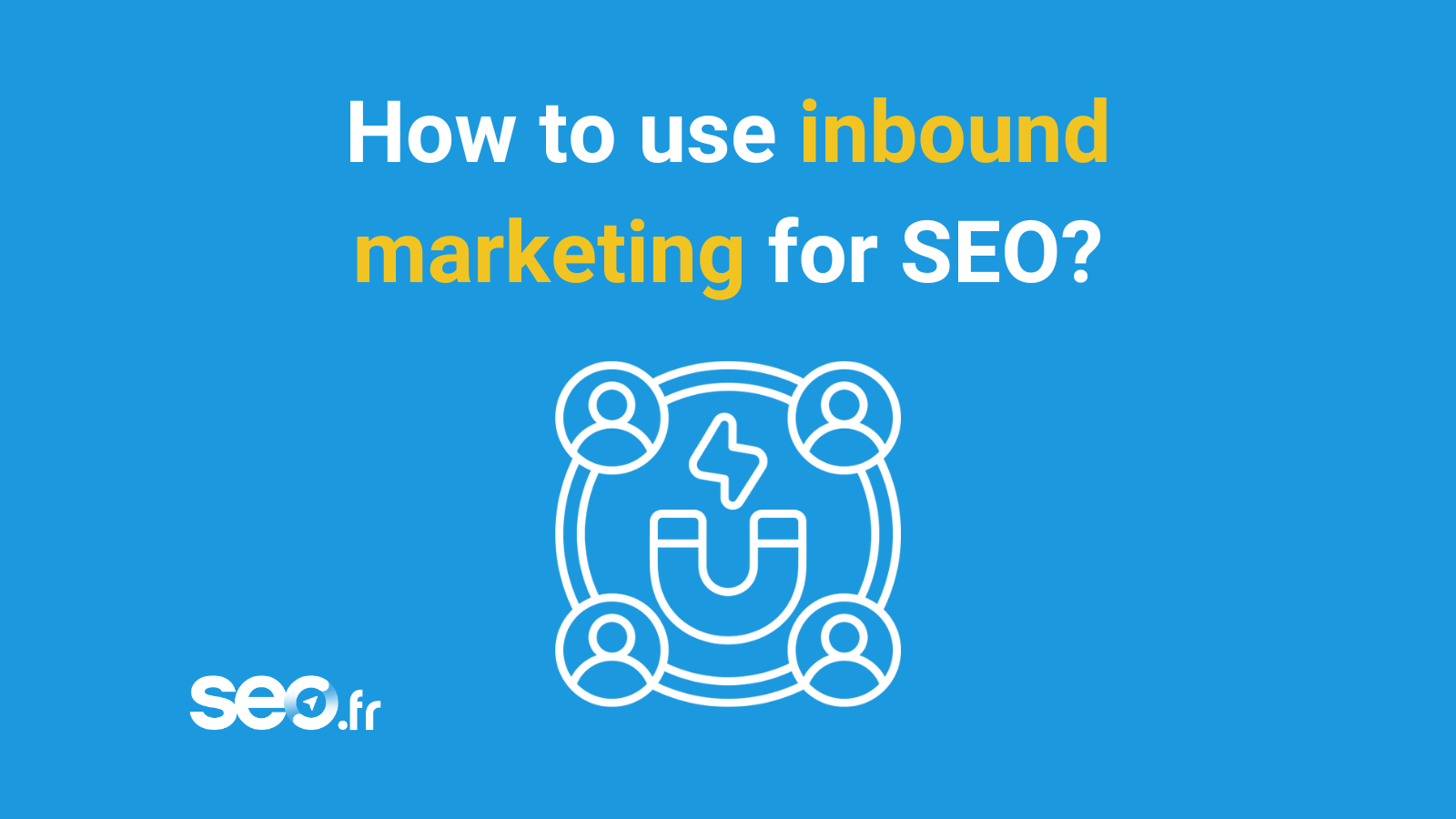Today, to attract, convert and retain new customers, inbound marketing has become essential. Unlike prospecting, which consists of “going and finding” potential customers where they are, inbound marketing aims to attract them… A strategy of attraction.
What is inbound marketing?
Inbound marketing consists of offering free, high value-added content that will serve as an entry point for contact with qualified prospects.Through quality content, the brand aims to arouse the interest and commitment of prospects for their products or services… and turn them into loyal, convinced customers.
This is an inbound marketing strategy: it attracts prospects organically.How does inbound marketing work?
The idea behind inbound is to enhance your brand image by getting prospects interested in the subject you’re dealing with.
The inbound marketing strategy aims to attract visitors who are at the beginning of the purchasing process for a product or service with rich, engaging content, in the sense that it assumes a genuine interest in the subject on the part of the prospect. One of the major advantages of inbound marketing:
- It attracts qualified prospects right from the start and considerably shortens the sales funnel;
- It is perceived as non-invasive;
- It positions the brand as an expert in its field.
A 4 steps strategy
As part of an inbound marketing strategy, the conversion funnel can be broken down into 4 phases.
As a reminder: a conversion funnel, or sales funnel, is the succession of steps required to convert qualified leads.
This digital marketing strategy requires :
- The creation of relevant content: a white paper on your core business, for example.
- Management of social networks to promote the content and collect leads (e-mail addresses) in return.
- An emailing strategy that promotes the content and its purpose.
- Search engine optimization of the page on your site dedicated to the presentation of this content, possibly accompanied by a Google Ads campaign.
Example of an inbound marketing strategy
Let’s say you have a dental practice. You want to expand your customer portfolio through inbound marketing. What methodology will you use?
You’ll create content on social networks and on your website to help your potential patients. In doing so, you’ll demonstrate your authority in your field and, in turn, establish a relationship of trust with your target audience. When they need dental care, guess who they’ll turn to? You, without hesitation. That’s what inbound marketing is all about.
Inbound marketing vs outbound marketing
Inbound marketing means generating web content to arouse the interest of your target audience. The aim is to bring the customer to you, hence the term “inbound marketing”.
Outbound marketing, on the other hand, consists in seeking out a target where it is, through targeted actions. Hence the term “outbound marketing”.
Inbound marketing: best practices
This digital strategy yields excellent results, provided :
- Good targeting;
- Produce strategic, value-added content;
- distribute attractive content at the right time on the right channels.

Why rely on inbound marketing?
Outbound marketing strategies are becoming less and less effective in the face of changing buyer expectations and habits. Consumers no longer want to be advised directly by a salesperson, preferring to pursue their purchasing journey independently. They use search engines like Google to find out more about the products and services they are looking for. It only takes a few clicks to find offers, make comparisons and choose (or read up on a subject thanks to good inbound marketing content).
Mass marketing campaigns don’t align with the prospect’s expectations or consider his position in the buying journey. The result: lower conversion rates and lower ROI.
Implementing inbound marketing strategies enables :
- Increase the proportion of qualified prospects.
- Supporting prospects.
- Start building a relationship of trust with potential customers before they buy, and over the long term.
- Increased customer loyalty.
- Better marketing ROI.
- Optimized conversions thanks to customer journey tracking.
How can an inbound marketing strategy benefit SEO?
SEO and inbound have a close relationship. Simply producing content isn’t enough to reach your targets. In addition to promotion via social networks or e-mail, the visibility of content in search engines plays a key role… and this new content can help your organic SEO.
Your website needs to present your content: on a page already dedicated to the subject, or in a blog post when it’s launched. In this way, you reinforce your Expertise in the eyes of Google (under the EEAT) and increase your chances of ranking on keywords related to the subject, even if only on queries such as: “white paper + subject”.
Got an SEO question?
Geraldine can help
5 years of SEO expertise

Key stages in a successful inbound strategy
Before creating any content, you need to ask yourself: who are you targeting?
Identify your personas
To create an effective strategy, you first need to target your audience. Identify your personas, professional profiles, ages, interests and hobbies. All this data will enable you to clearly define your digital communications strategy: the content to produce, the tone to adopt, the levers to activate.
Develop an appropriate editorial strategy
Next, we need to develop an editorial strategy: a content strategy tailored to the needs of the defined target audience.
By offering high-value content tailored to your target audience’s expectations, you’ll be able to strengthen your e-reputation.
The final stage, which varies in length, consists of building customer loyalty and turning them into brand ambassadors.
What tools are needed to manage an inbound strategy?
There are three ways to support, monitor and evaluate the effectiveness of your marketing campaign.
A tailor-made SEO strategy
To drive traffic to your website and your content, you’ll need to define a good SEO strategy and a methodology for regularly creating relevant, even-quality content on the right keywords in your niche.
A SEA launch strategy
Although it’s possible to develop an inbound methodology without advertising, you can use SEA to gain visibility in the SERPs and arouse the interest of your targets.
Effective CTAs
A CTA is a visual element positioned on a web page, blog or email that encourages your visitors to take action. Its role is to encourage your visitors to perform a specific action… like downloading a white paper.
The CTA links the attractive content that attracts visitors to your offer, turning them into leads.
In this way, visitors who leave their email address to receive the white paper, and agree to receive your newsletter, can then click on the “order yours” CTA (for example) in your next newsletter, and go from prospect to customer.
The commandments of successful CTA :
- Clarity: make sure the CTA is clearly worded and calls for action.
- Strategic placement: position the CTA visibly and appropriately in your emails.
- Attractive design: use contrasting colors and an attractive design for the CTA.
- Tracking and evaluation: measure clicks, conversions and success rates of your CTAs to assess their effectiveness. E-mail platforms make this easy.
More than just a “button”, the CTA is the cornerstone of your inbound marketing strategy: linking content, visitors and conversions.
How do you measure the effectiveness of an inbound marketing campaign?
The following KPIs (key performance indicators) will help you measure the effectiveness of your campaign.
- Number of unique visitors to your website as a result of the campaign
- Conversion rate: to measure the transformation of visitors into leads or customers.
- Bounce rate: to assess the quality of your pages in relation to visitors’ expectations.
- Click-through rate of your main CTAs: to track the engagement of your visitors, subscribers and prospects.
This will enable you to compare the effectiveness of each of your campaigns, and evaluate how to adjust them to optimize results.
A customer interested in a first piece of content will always be likely to be interested in more quality content… That’s how you maintain contact, trust and interest.









